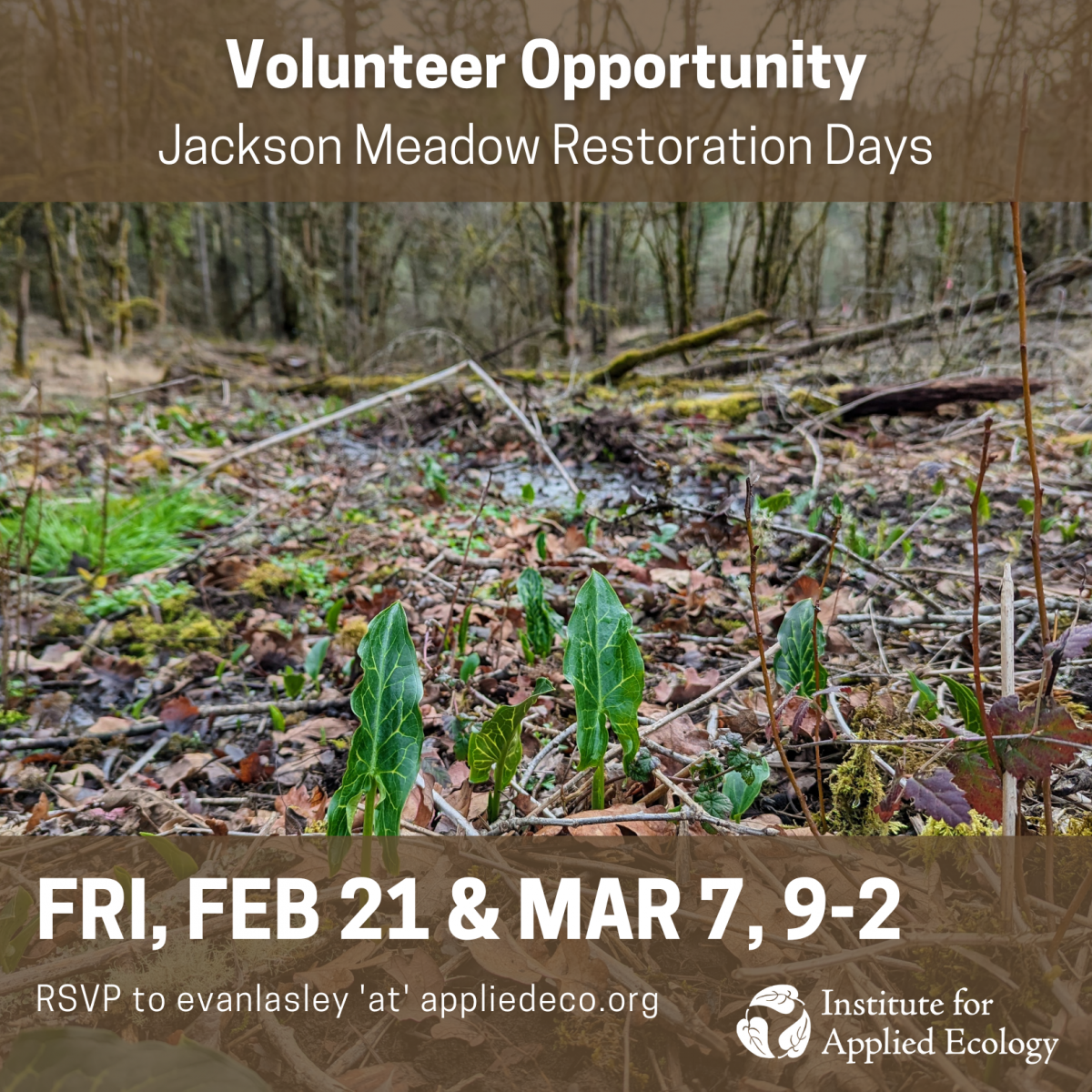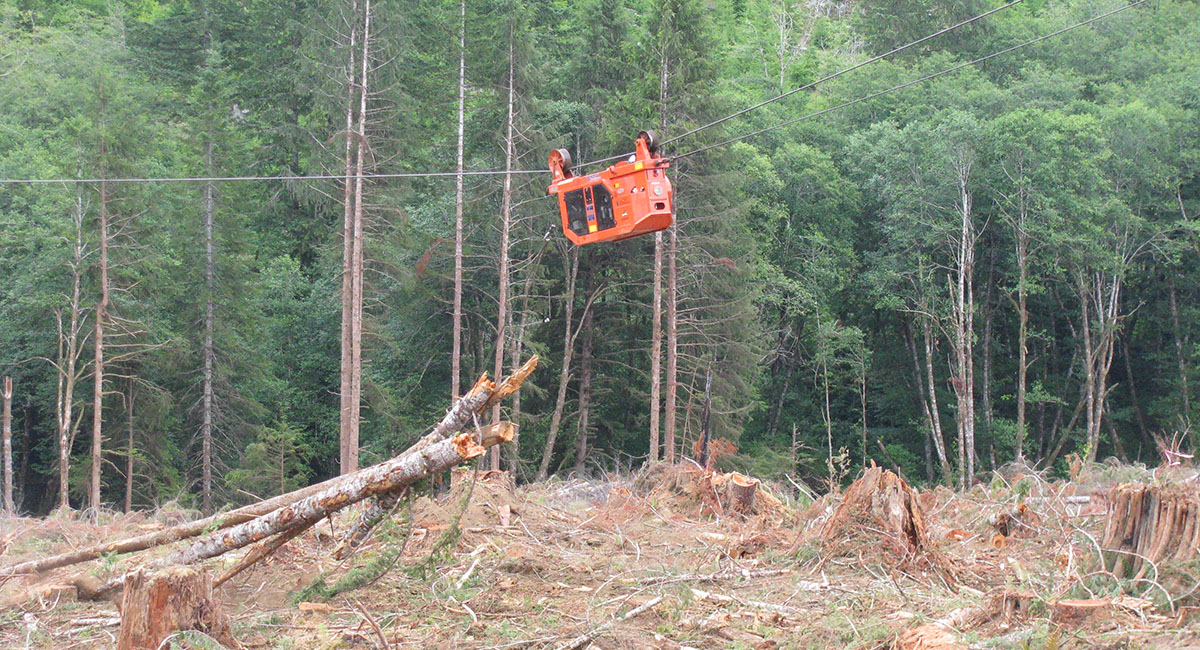Reforestation
Through active forest management, the Research Forests plant between 50,000-100,000 seedlings each year. Species include: Red Alder, Douglas-fir, Western Red Cedar, White Pine and Ponderosa Pine. This species types are used for a variety of reasons including addressing root rot areas, demonstrating species trials as well as planting density trials.
Restoration
Jackson Meadow Project (2021-present):
In 2021, OSU’s College of Forestry began partnering with the Institute for Applied Ecology (IAE) to develop and implement an oak-prairie restoration project for Jackson Meadow. The 67-year-old Douglas-fir stand in the upland was scheduled for harvest in 2022 to release Oregon white oak trees for wildlife and aesthetics and reduce fuel loads along the forest boundaries. This created an opportunity to conduct a full-scale restoration of the site, including the remnant meadows adjacent to the harvested upland. IAE developed a restoration proposal that also included a research component to monitor changes in site condition over the project’s duration and contribute to a regional network restoration experiment.
Volunteer opportunity! (More info here)

Vegetation Management
The Research Forests utilizes a number of different techniques to help control unwanted vegetation including invasive species. Fire, manual cutting, pulling, shade mats and chemicals are all used on the forests. Most of our vegetation control is done with the use of herbicides that are applied via helicopter as well as with a backpack sprayer. In higher recreational use areas, pulling weeds, burning, shade mats and backpack applications are preferred. In low recreational use areas, aerial herbicide applications are used to help control unwanted vegetation.
Pre-Thinning
The Research Forests utilizes a technique called pre-commercial thinning (PCT) on our steep slopes to help space out conifer regeneration. By spacing out our conifer regeneration, those trees are able to continue to put on diameter growth as well as height growth making them less susceptible to damage from wind, ice and other natural disasters.
PCT is done manually with a small crew using chainsaws to cut dead, dying, diseased and unwanted future crop trees within a stand. As this is primarily done on steep slopes, it is not economically feasible to remove the cut trees from the stand. The trees that are cut are left within the stand to naturally rot and provide nutrients back to the soil.
Harvest
The Research Forests actively manages and maintains over 14,000 acres of forested property covering nine different forest tracts. Yearly, the forests grow between 6.5-7 million board feet of lumber and yearly the forest staff harvests between 6.5-7 million board feet of timber. The annual allowable cut is accomplished through a number of different logging techniques including skyline clearcutting, skyline thinning, ground based clearcutting, ground based thinning, cut-to-length thinning and recently a cut-to-length clearcut. The Research Forests rely on skilled contractors with a multitude of different equipment to accomplish their goals. Harvest operations include:
- CTL - Cut-to-Length is a term used to describe predominantly a thinning operation where a harvester severs the tree from the stump and cuts it to specified lengths in the woods. Once cut into the specific lengths, a forwarder picks up the logs and moves them to a landing located at the side of the road. The Research Forests uses this technique on stands where the amount of board feet for removal makes it economically unfeasible for traditional logging equipment to operate. This is typically in our younger even-aged Douglas-fir stands between 25-50 years old.
- Patch cuts/CC - Both patch cuts and clearcuts are a technique that the Research Forests uses on many of their tracts. Typically, patch cuts are between 1.5-3 acres in size and clearcuts between 20-30 acres in size. Patch cuts are a great tool to be used along forest boundaries or in highly visual or sensitive areas. Clearcutting is a tool for forest landowners to capitalize on their forest investment. We use both patch cuts and clearcuts as a tool to both capture our forest investment as well as a way of starting and growing a new forest.
- Thinning - Thinning operations on the Research Forests have been occurring for decades on all nine of the tracts. Thinning is designed to remove dead, dying, diseased and suppressed trees to allow for more growing space for target retention trees. This type of operation occurs in stands ranging in age from 25-60 years old and in some instances in stands even older. Logging techniques include skyline thinning using a yarder as well as ground based thinning using a skidded or small crawler tractor.
Know before you go! Check out harvest closures and information via the Research Forest Interactive Harvest Web Map and by signing up for Forest Updates.
